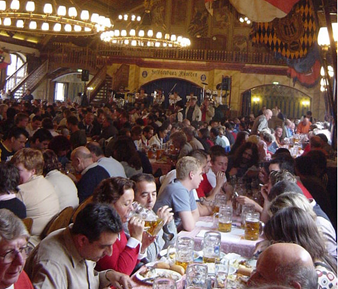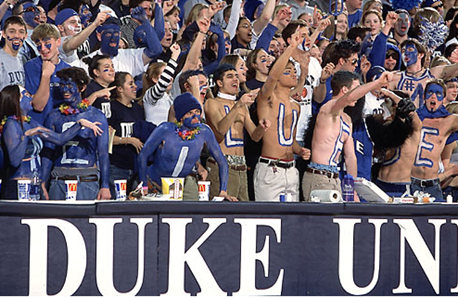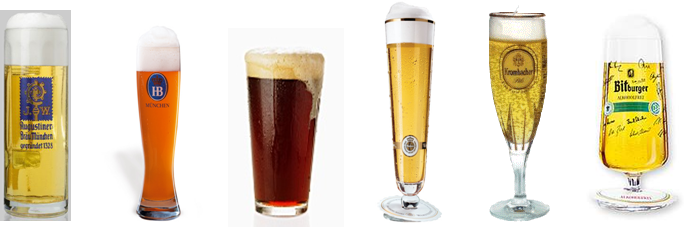Understanding the Beer Bracket, Part I
 Monday, October 18, 2010 at 14:56
Monday, October 18, 2010 at 14:56 Obviously, the Schnitzelbahn Bier Tournament was modeled on the NCAA Basketball Tournament. (Yes, we know the field is now 68 teams. We’re sticking with tradition.) But let’s take that further, especially for those that are not familiar with Germany or major German beer brands. In the spirit of the Sports Guy, let’s match some German beer regions with a athletic conferences, and specific breweries with corresponding basketball teams. Of course we need to start with…
Bavaria = The ACC

Perhaps Bavaria did not invent beer (just like basketball was invented in Massachusetts), but they’ve taken over now. And within Bavaria, think of Munich as the Research Triangle. Munich’s breweries created the biergarten tradition, include the most famous beer hall in the world, and are the backbone of largest fair in the world where 6.9 million liters of beer are consumed in just two weeks. (And yes, tickets to Oktoberfest can be very hard to get.) Even more, the “barbeque” of choice is pork in both regions, not beef. Carolina has its pork roasts, and Bavaria loves its pork cracklins too, in the form of schweinehaxe... Yum.
The major players in Munich:
Augustiner = North Carolina
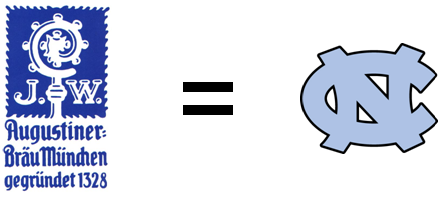
When you ask a Bavarian what the best beer is, Augustiner often is the answer. It’s in the blood – many Muncheners will only go to Augustiner restaurants and beer gardens, as if no other beer exists. Plus, check out the flag of Bavaria: Carolina Blue and white. This brewer has all the tools as well: fantastic food and desserts to go with the brew. And yes, despite the we-do-it-better-than-anyone arrogance, when you get a cold one at an Augustiner summer beer garden… yeah, it’s that good.
Hofbräu = Duke
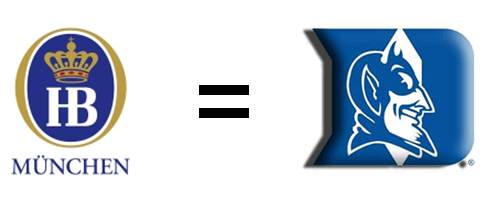
Just as Cameron Indoor Stadium is usually listed as one of the sports venues to see before you die, so too is the Hofbräuhaus on the short list of destinations for beer drinkers. And like Duke, the entire Hofbräu experience/aura evokes a strong response: you either love-em-or-hate-em.
The Hofbrauhaus and Cameron Indoor Stadium
Ironically, Duke doesn’t really feed the NBA like Carolina – likewise, Hofbräu is a quality beer but never discussed as the “best”. Maybe both get too much backlash because they sell so many damn sweatshirts and steins to tourists. But in the end it doesn’t matter, because Hofbräu is a major player year in and year out.
Löwenbräu = North Carolina State
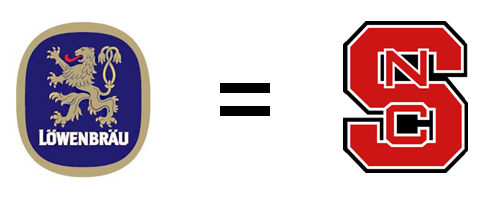
Tell a non-fan you attend N.C. State and they say “isn’t that where Michael Jordan played?”. Again and again you grit your teeth and explain no, that’s UNC, not State. Same thing here: Americans think of this, which was a Miller licensed product that uses a completely different recipe, including corn. The real Löwenbräu biergartens and restaurants in Munich are nice, but between the name confusion and general bullying by the big boys, only locals really go here. Beer is good, atmosphere nice, and schnitzel excellent, but just doesn’t have the magic of UNC or Duke.
Significant players outside of Munich:
Andechs = Wake Forest

Both were founded to do God’s work, but have grown well past their original roots, although Andechs is still run by the monks, not the Demon Deacons. Andechs is now a producer of premium beer, schnapps, and dairy products sold throughout Bavaria. Although the monastary is a 45-minute train ride from Munich and an additional hour hike from the station, its restaurant (in the Cloister) is routinely packed because the food is outstanding. If it makes the finals, everyone will be rooting for them because it just feels like they deserve it.
Tegernseer = University of Virginia

It’s all about the campus – Tegernsee is gorgeous in summer and winter. Maybe it’s not a World Heritage Site like UVA, but Thomas Jefferson would approve. Beer is very good too, just smaller and not located in the triangle of basketball mecca. Might not win the big event, but behind mostly-empty bottles of their Helles are smug smiles of people who know they’ve got it good. It’s already in the Sweet 16 in our tournament!
In the next installment, we’ll look at the northern German brewers and their NCAA counterparts.




